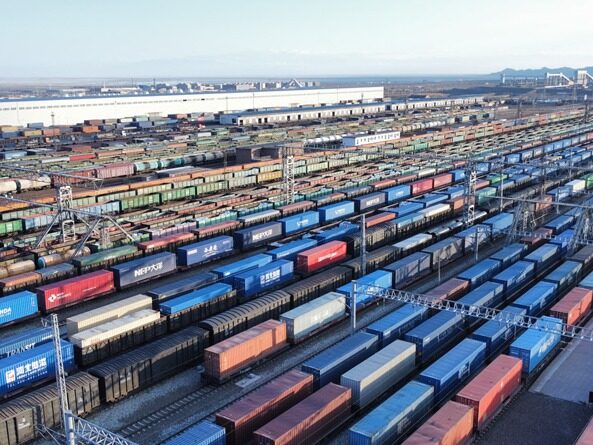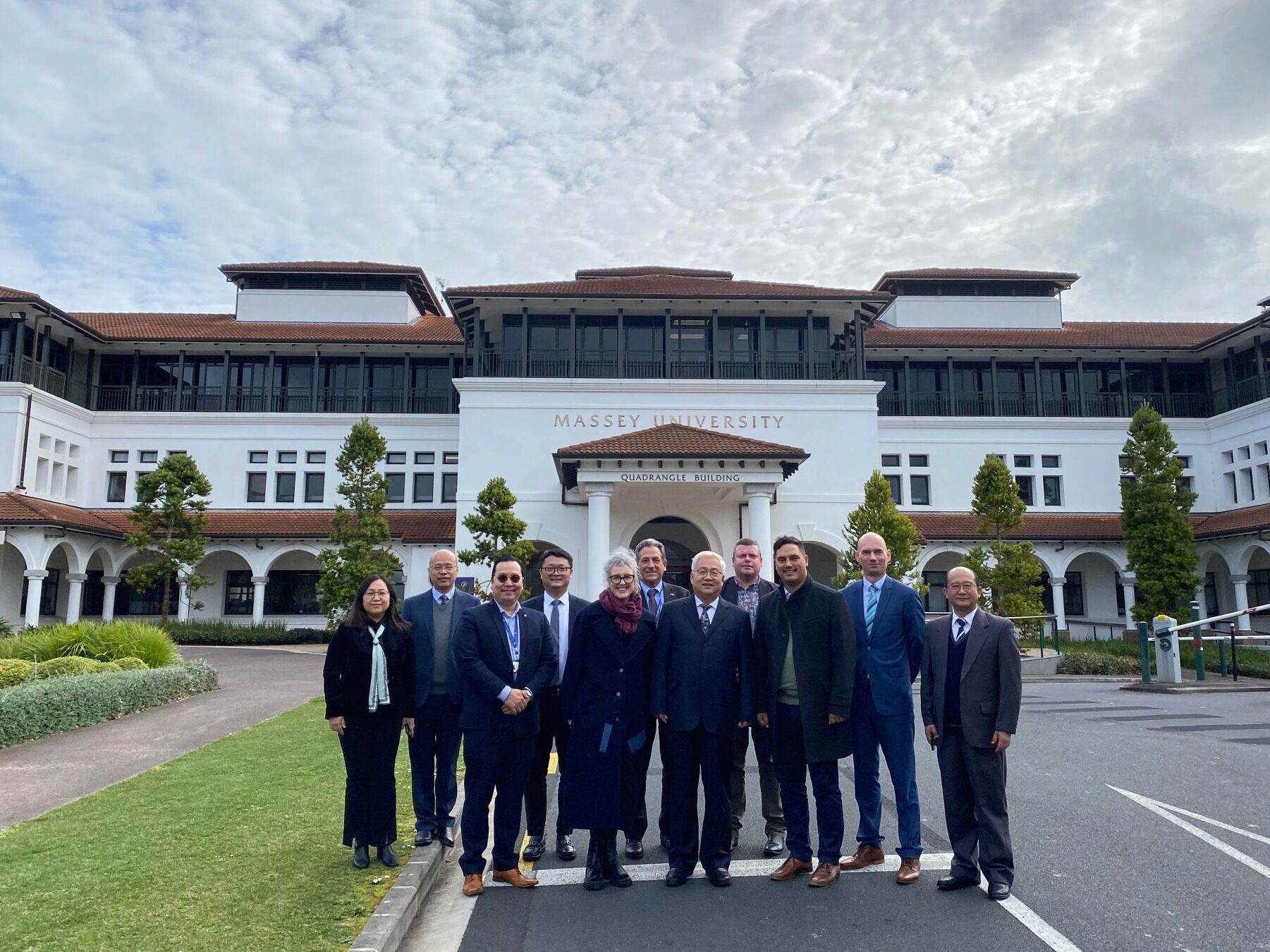- As a rigid demand of mining industry, driverless driving is developing rapidly in open-pit mining areas
- A relatively closed environment is more suitable for the operation of autonomous vehicles, and mines have almost become one of the scenarios with the strongest demand for autonomous driving

The competition of great powers depends on industry, and the competition of industry depends on intelligence. As an important basic industry related to China's economic lifeline and energy security, the mining industry is the only way for its development, which can promote the development of China's mining industry in a safe, efficient, green and economic direction. The unmanned driving technology of mining vehicles occupies an important position in the mining intelligence strategy. With the popularization of 5G+ industrial Internet, artificial AI and other technologies, China's energy mining industry is also welcoming the new look of smart mines. The blue ocean of the 100 billion-level market for unmanned mines is waiting for capital injection. After all, unmanned mines are a fantastic idea. , or is it a reality? Is it worth the investment?
Two major dilemmas faced by traditional mines
An aging population makes it difficult to recruit
According to the seventh national census, China's population aged 60 and above accounted for 18.7% (among which, the population aged 65 and above accounted for 13.5%). Compared with 2010, the proportion of people over 60 years old increased by 5.44 percentage points; while the population aged 15-59 decreased by 6.79 percentage points.
One rise and one fall, highlighting the dilemma of the current domestic labor market. In the field of mining, the problem is even more severe.
As early as 2007, the Wangpingwa Coal Mine, the largest mechanized mine in the northwest, encountered the problem of aging. At that time, the number of retired workers in the coal mine exceeded 4,000, while there were only more than 2,400 workers in the mine. That is to say, one worker in the mine had to support nearly 2 retired employees.
Today, more than a decade later, the problems brought about by aging are even more prominent. Almost none of the front-line workers in the mines are post-80s, all post-70s or even post-60s. Young people are reluctant to go to mines for boring and dangerous jobs.
Frequent security issues
The State Bureau of Mine Safety Supervision released the 2020 domestic mine safety accident data at a press conference. Among them, there were 434 mining accidents nationwide, resulting in 573 deaths, a year-on-year decrease of 19.1% and 22%. Although the overall accident data is on a downward trend, each safety incident brings a lot of damage.
Once a safety accident occurs in a mine that causes the death of a worker, it will inevitably face a shutdown for rectification, ranging from two months to three or four months, and even some mines that do not meet the safety standards will be shut down directly. This has brought direct economic losses of hundreds of millions of yuan to the mines, as well as bad social impacts. Therefore, safe production is always the bottom line in the mining field. The solution is the intelligent and intelligent construction of mines.
Smart mine from concept to reality
As early as the 1990s, the mining industry proposed an intelligent transformation. In foreign countries, companies such as Caterpillar in the United States and Komatsu in Japan began to develop autonomous driving in mining scenarios in the 1990s, and proposed the concept of smart mines. In China, the concept of digital mine was also proposed in 1999, the core of which is to use technology to make mechanization move towards automation, and to form a unified management and control system for mines through computer networks.
In 1994, Caterpillar had two unmanned mining trucks put into use in the United States. In 1995, a 77-ton mining truck from Komatsu conducted an unmanned mining test in a quarry in Japan.

In 2008, construction machinery companies such as Komatsu of Japan and Caterpillar of the United States successively put about 300 large unmanned mining trucks into mines (mainly iron ore and copper mines, etc.) in Chile, Australia, Brazil, Canada and other countries. , and the total amount of ore transported exceeds 4 billion tons.
The huge potential shown by the practice of unmanned mining trucks in foreign mining areas has made domestic mining practitioners full of confidence in this model. Therefore, in recent years, a large number of start-up companies have poured into the smart mining track, and a number of smart mining projects have been launched. For example, in 2014, the 1001 fully mechanized mining face of Huangling Mining No. 1 Coal Mine of Shaanxi Coal Chemical Group realized unmanned mining. The automatic operation is realized in the operations of coal cutting, sliding, rack shifting, transportation, and dust removal at the working face, and the purpose of unmanned operation on the working face is achieved.
Why is the progress of domestic smart mines still slow?
First, the distribution of overseas mines is relatively concentrated, and the output of a single mine is huge, and it has the ability to transform as a whole, while the domestic mines are scattered, the infrastructure is relatively backward, and the ability to transform is insufficient. Most of the unmanned mine cards exist as part of the overall solution of the smart mine, and their operation can only be realized in the environment after the mine has been upgraded with overall digitalization and intelligence. Moreover, in this type of scheme, in order to ensure the safety of the entire transportation process, the mine cards driven by people are excluded, because the illegal driving behavior of human drivers will destroy the consistency of the system, and there are also potential safety hazards.

This also means that in order to land the unmanned mining card, the mining area must first be transformed, which will be a huge expense. Among them, the cost of switching from manned mining trucks to unmanned mining trucks is the largest. For example, super mining trucks with a load capacity of more than 300 tons, the current market price is at the level of 10 million yuan, even for mainstream mining trucks with a load capacity of 60 tons. Its price is also as high as millions of dollars. Such an expensive asset, for ordinary mine owners, does not mean that it can be eliminated immediately.
Secondly, compared with foreign countries, the conditions of domestic mines are worse, which is reflected in the poor road conditions, more gravel and dust in the mining area. Many mines in China rely on mountains for mining, road construction is difficult, and the service life is short. Therefore, the roads in the mining areas are mostly paved with gravel, and the road conditions are complex and dusty. This in turn makes it easier to damage vehicle components and shorten vehicle life.
Therefore, domestic mines have higher requirements for autonomous driving technology and vehicles than foreign countries. However, the domestic driverless technology started later than foreign countries, and the early technology was immature, making it difficult to adapt to the needs of mines.
Unmanned driving in domestic mines welcomes the turnaround
First, the basic conditions of the mine have changed. After the reform and opening up, changes in the number of mines in China mainly occurred in two stages of development: from 2005 to 2012, the total number of mines was more than 100,000. From 2013 to 2018, the number of mines affected by the policy dropped sharply to 58,000 in 2018. It is expected to maintain a growth rate of -5%~-15% in the future, and it will be reduced to 45,000 in 2023.
The overall number of mines is decreasing, while the volume of individual mines is increasing. In 2018, the number of large-scale mines in China was about 4,324. With the implementation of the green mine policy, the proportion of large-scale mines in China will continue to increase in the future. This lays the foundation for the advancement of smart mines.

Secondly, the state is also continuously promoting the process of mine intelligence in terms of policy. At the beginning of 2020, eight departments including the National Development and Reform Commission and the Energy Administration issued the "Guiding Opinions on Accelerating the Intelligent Development of Coal Mines". It is mentioned that by 2025, large-scale coal mines and coal mines with severe disasters must basically realize intelligence, and form a technical specification and standard system for the intelligent construction of coal mines. As an important part of the intelligent mine system, unmanned driving, thanks to the accumulation of technologies over the past years, is easier and faster to land, forming a benchmark project for smart mines.
In addition, driverless technology continues to mature. At the end of 2018, the problem of unmanned driving began to appear after the explosion of the capital market. Due to the constraints of technology, law, cost and other conditions, unmanned driving has been difficult to implement and gradually entered a trough. Since then, with the continuous progress of driverless technology, it has found a breakthrough in the commercial field, especially the mining field.
The mining market has reached hundreds of billions, and capital has poured in one after another
According to statistics, in the field of mining transportation, the transportation of ore and earthwork has a trillion-ton market. In this huge market space, the open-pit coal mine earthmoving transportation market space is the largest. According to the latest data released by the "BP World Energy Statistical Yearbook 2020", in 2019, the total global coal production exceeded 8.1 billion tons, and China's coal production accounted for 47% of the global total, ranking first in the world's coal production for 30 consecutive years. Among them, the mining ratio of China's open-pit coal mines increased from 5.1% in 2005 to 25% in 2018. Based on the average stripping ratio of 7 cubic meters per ton, the domestic open-pit coal and earthwork stripping unmanned transportation market size is about 25%. 45 billion yuan/year.

Since 2018, autonomous driving companies have successively conducted field tests and commercial trials in mines. Autonomous driving solution providers represented by Tage Zhixing, Yikong Zhijia, and Mengshi Technology have joined forces with North Shares, Tongli Heavy Industry, etc. The leading mining truck manufacturer actively promotes the open-pit mine project landing test and commercial operation, bringing China's driverless technology into a new era. Demand Determines Market Prospects The rapid development of China's economy has driven the continuous growth of the equipment industry.
The large number of transportation markets for Chinese mining companies has brought opportunities for the stock of large mining trucks and wide-body vehicles. Today, the potential value of this market is 32 billion yuan, and it is increasing at an annual scale of 5.875 billion yuan. In response to China's huge market demand, in June 2016, the National Development and Reform Commission and the National Energy Administration issued the "Energy Technology Revolution Innovation Action Plan (2016-2030)", which clarified 15 key tasks for energy innovation, including the 2030 To achieve intelligent mining, the key coal mining areas should achieve unmanned and mechanized levels of more than 95%. In particular, the "Guiding Opinions on Accelerating the Intelligent Development of Coal Mines" issued by eight ministries and commissions including the National Development and Reform Commission in 2020 clearly stated that unmanned transportation of open-pit coal mines will be realized by 2025. Driven by relevant policies, the implementation of autonomous driving in mines will accelerate from demonstration to industrial application.

Today, the world's five largest suppliers of mining vehicles are conducting the application and research of unmanned mining vehicles. Through research and development, China's unmanned mining card technology companies have also sprung up like mushrooms after a rain. A group of technical service providers such as Mengshi Technology, Xidi Zhijia, and Huituo Intelligent stand out, bringing a new "spring breeze" to China's mining transportation industry. ".
Embrace the new ecology and meet the new future
At present, unmanned driving is surging. As industry experts said, the overall market size of China's unmanned mining truck industry is expected to reach the level of 100 billion yuan. However, the current unmanned mining trucks are expensive, the mining environment is complex, and the project implementation is difficult; the technology, cost, scale and engineering capabilities are even more severe challenges that related companies need to face. Of course, for those who come prepared, challenges are opportunities. Made in China always contains infinite possibilities.
China's mines have a long way to go to become intelligent, and the national "new infrastructure" policy is leading infrastructure construction with new development concepts. The continuous emergence of 5G-related new technologies will bring new experiences and new opportunities to all walks of life. The innovation of driverless technology is subverting the open-pit mining industry, which makes us full of expectations for the development prospects of smart mines in the future. Editor/Sang Xiaomei
Comment
 Praise
Praise
 Collect
Collect
 Comment
Comment
 Search
Search














Write something~